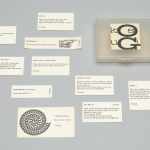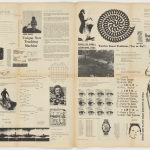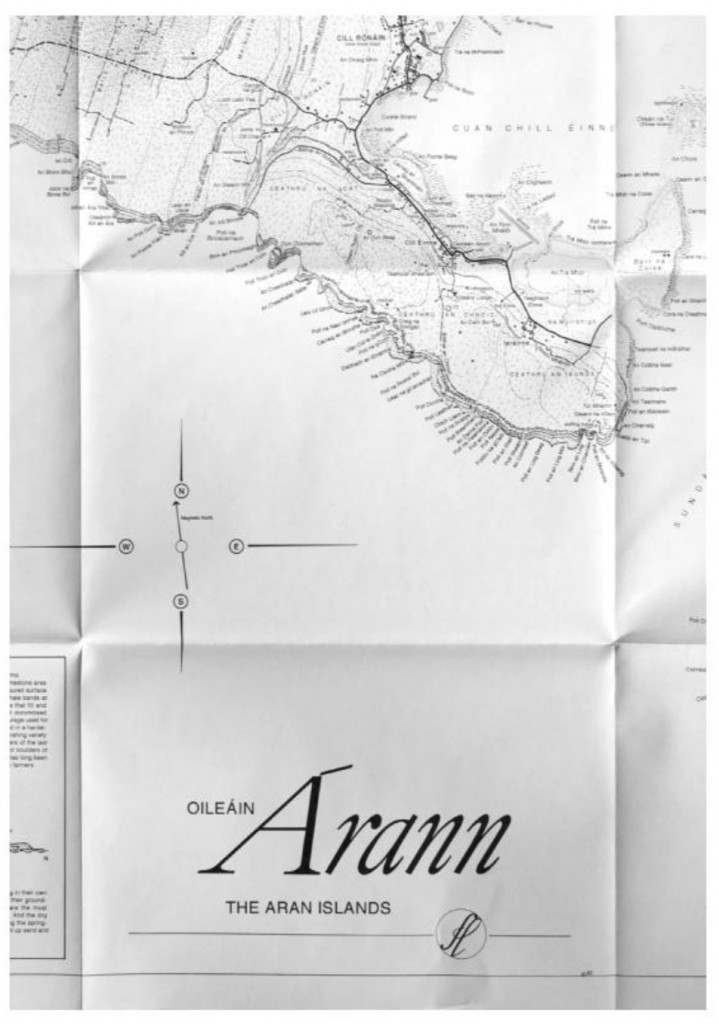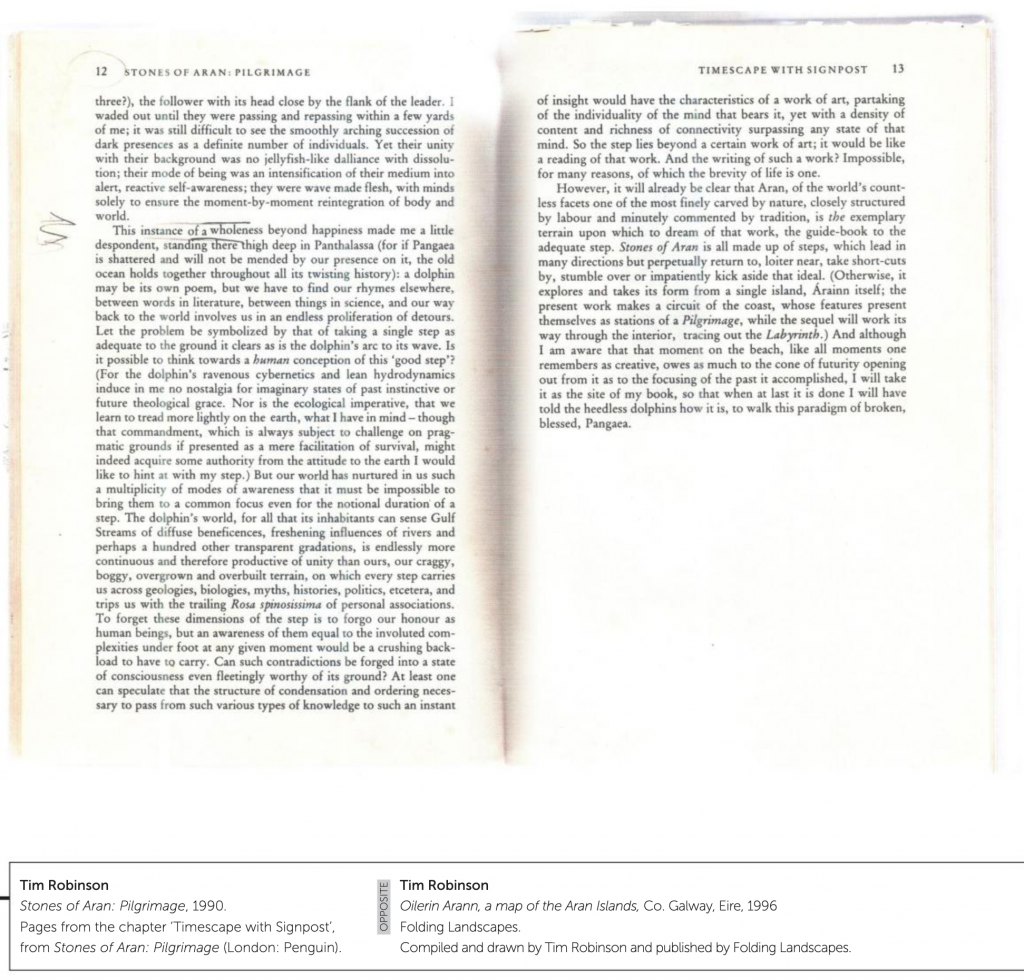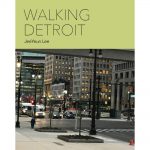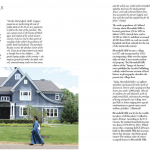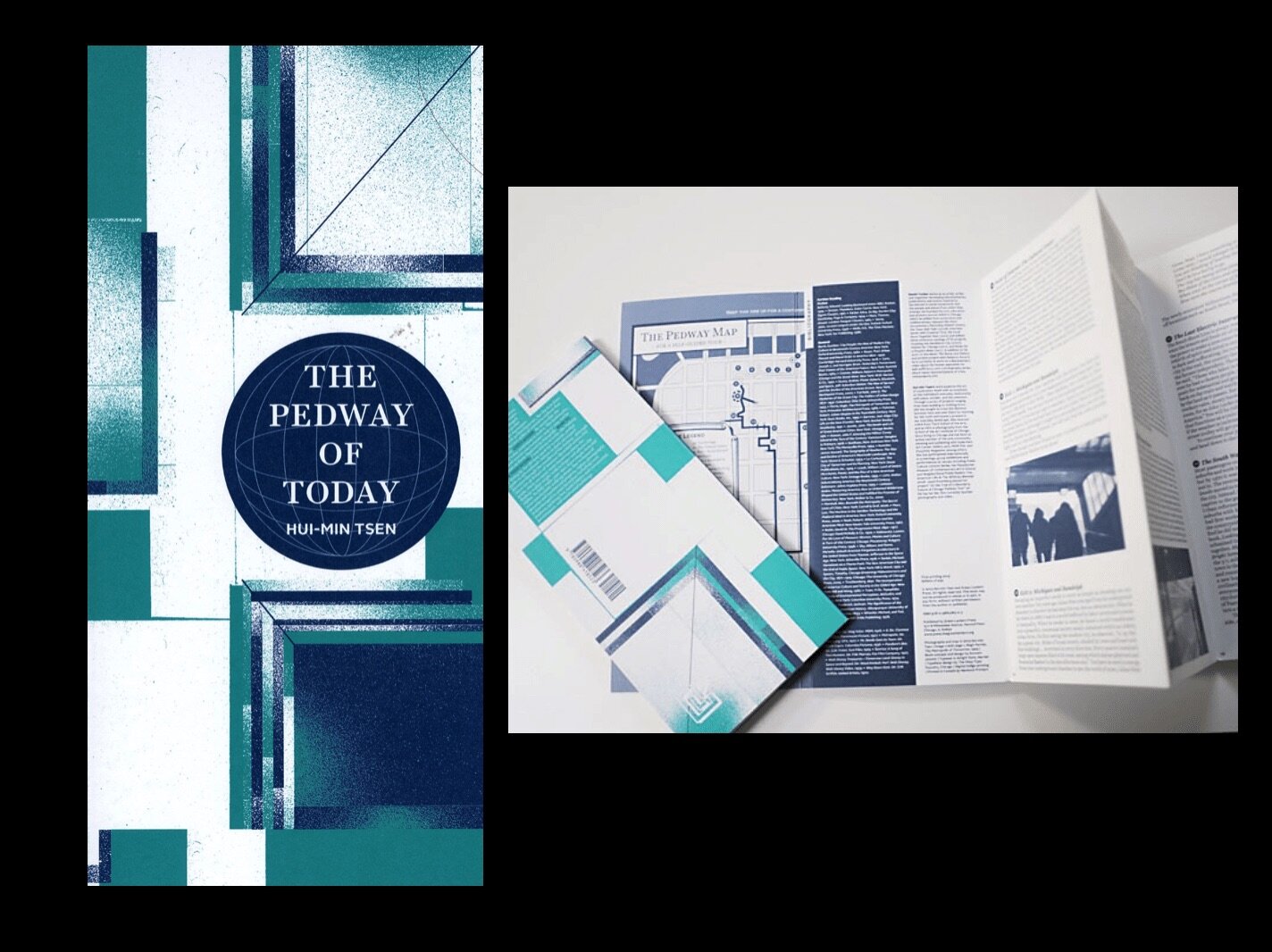
published 2013 by Green Lantern Press | Specs: 18 pages, 4.2 x 0.2 x 9 inches
“Deep beneath the surface of the city, a tangled ribbon of corridors runs throughout 40 blocks of downtown Chicago. This meandering passage appears to have grown up organically as if it were an animal’s burrow or a donkey’s path. Its route is illogical: the corridors exist outside of known space, and its hidden entrances lead to mysterious destinations. What is this place? It is the Chicago Pedway, an intricate non-system of pedestrian tunnels built to separate the citizens of the city from the dangers and foul weather encountered on the street.
On the Trail of a Disorderly Future was an interdisciplinary project consisting of a walking tour of Chicago’s Pedway, ephemera given and sold to tour participants as souvenirs, and a book for a “self-guided” tour of the Chicago Pedway. The project told a story across 36 points-of-interest, weaving together mythic and historical tales to tell the story of urban development, utopian impulses, and fears of the city from the Renaissance until now.
Details: Active from 2009-2013 | performance (90-minute walking tour), ephemera (postcards, map, website), book” (credit)

